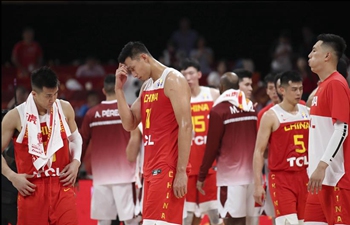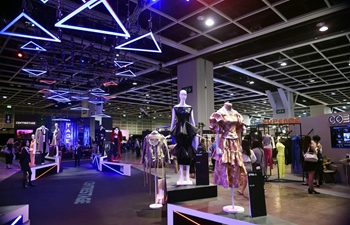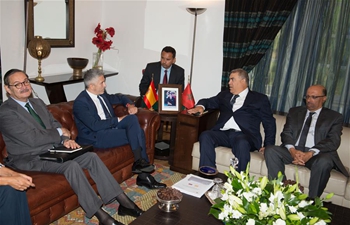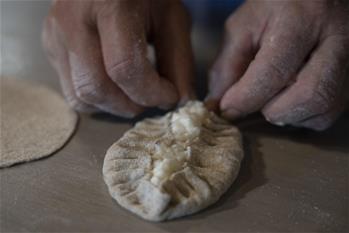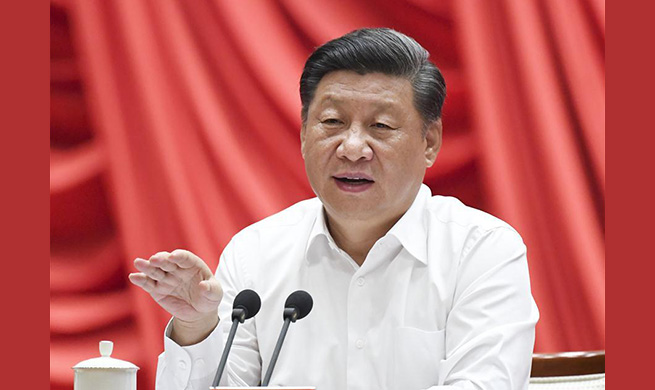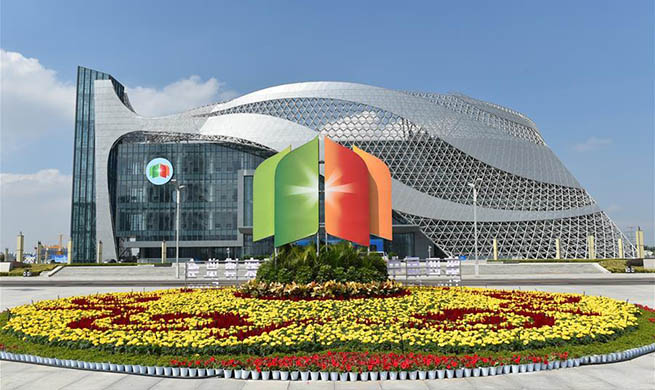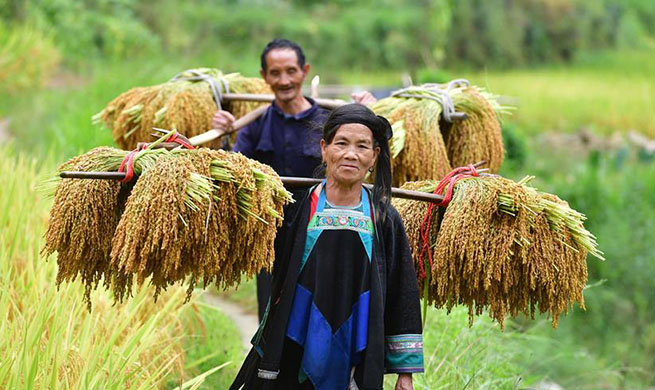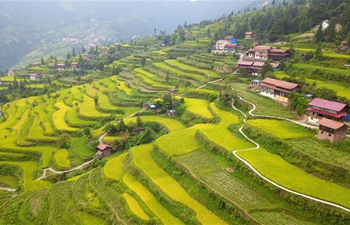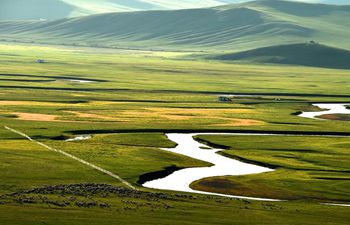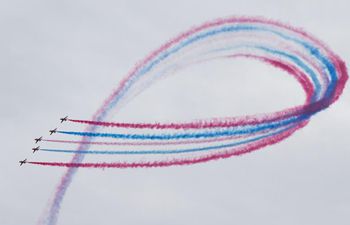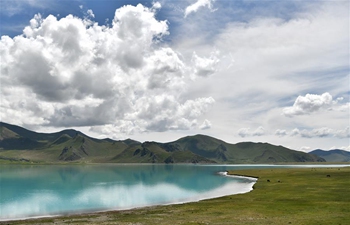by Toh Ee Ming
SINGAPORE, Sept. 5 (Xinhua) -- Ana Rohana, an Indonesian domestic worker, is virtually inseparable from her cameras, so much so that she lugs her trusty second-hand Nikon DSLR camera and compact Fujifilm camera wherever she goes.
Photography becomes a means to record her life journey of working in Singapore for the past 10 years. Ana’s photograph of children joyfully playing with bubbles at the city’s East Coast Park, titled In the Bubbles World, is one of the 12 shortlisted photographs in Singapore’s inaugural Migrant Workers Photography Festival (MWPF), which kicked off here Thursday.
Held from Sept. 5 to Sept. 15 at Objectifs in the Bugis district, this marks the first photography festival dedicated to migrant workers working and residing in Singapore.
In Singapore, a city that is far away from her hometown in Blitar city, East Java, Ana trawls the streets of Chinatown, Tiong Bahru and Little India to chase after “light, color, emotion and that perfect moment of drama and beauty.”
“Taking photos helps me to remember and to show that I have been here… I want to show the beauty of a place and its people,” said the cheerful and bubbly 35-year-old.
Organized by a committee comprising both migrants and Singaporeans, the festival seeks to connect the community through the universal language of visuals and promote new ways of seeing Singapore.
To spread the word about the competition, the organizers tapped on social media, word-of-mouth, and worked with Aidha (a charity organization that helps foreign domestic workers and lower-income women in Singapore) and HealthServe (a non-profit organization that provides medical care and counselling to migrant workers).
The team received 118 submissions in response to the theme Life in Singapore.
Of these, 12 images were shortlisted and the finalists consist of a mix of foreign domestic workers and construction workers from Indonesia, Philippines and Bangladesh.
The images present a quietly moving and introspective look at the ordinary moments, from a group of workers in helmets gathered for their daily safety briefing, colorful clothes drying at the Housing and Development Board flats, to an elderly man in Chinatown on his bicycle delivering eggs with a smile.
Scenic spots, such as the Sungei Buloh Wetland Reserve, Chinese Garden or the West Coast Park, also feature prominently, creating a visual map of where the workers frequent in their free time.
Some scenes reveal the hardships of a migrant worker’s life with unflinching honesty. In one image, a plastic water bottle, a packed lunch in a plastic takeaway bag and a pair of hole-ridden gloves lie on the bare floor.
In another, a large bird sculpture perches on a rock in the foreground, while the gleaming Marina Bay Sands building looms in the distance, the worker has titled the photo “National Bird of Bangladesh.”
The image serves a stark reminder to how the gleaming city of Singapore is built on the sweat and struggles of many foreign laborers here.
For local poet, photographer and judge for the festival Marc Nair, the images “speak of unguarded moments, of in-between space, a gaze that contains both longing and laughter.”
Perhaps finalist and Filipino domestic worker Jean Ragual Madohinog, 38, sums up what is on the hearts of many workers.
“No matter how life wavers every day, let’s be united and work together towards our safety and a comfortable life, (for) every generation (to) come.”
The idea to organize the MWPF first stemmed from organiser Zakir Hossain Khokan's love for photography.
Before coming to work in Singapore as a migrant worker in 2003, Zakir was a freelance journalist in Dhaka, Bangladesh, and is now an award-winning published poet.
Participating in the arts offers a safe place for migrant workers to explore topics of interest, express their emotions and form firm friendships with other migrants and the wider local community, said Zakir.
“Through the different shades of photography, I wanted migrants to prove that they are not just the “3Ds” they have been labelled with - doing difficult, dirty and dangerous work,” he added.
Fellow organizer and artist Sean Cham said that photography provides an “alternative mode of expression without spoken or written word, which can be daunting to some.”
And while there has been many photography festivals and exhibitions in Singapore, migrants are hardly represented. This festival acts a starting ground for their works to be recognized, he added.
Nonetheless, Zakir said he was heartened by how the arts scene for migrant workers has “flourished tremendously.”
The winners of the event will be announced on September 8. Each winner will receive a DSLR camera.
The organizing team hopes to eventually bring the exhibition to migrant worker dormitories as well as schools. So far, it has already received invitations from the staff from the National University of Singapore to hold an exhibition on its campus.
Likewise, Ana hopes to spread the message of the arts further and inspire her fellow migrant workers to chase their dreams.
Prior to this festival, several of her works has been showcased in the Esplanade, along with other migrant worker-artists. Next, she is planning to learn how to create short video tutorials on photography skills for other workers.
“It’s not just about working and earning money, but you can also pursue what you are interested in, like photography, cooking, writing… Don’t be scared to try new things,” she said.
